How to safely unscrew a light bulb from a false ceiling?
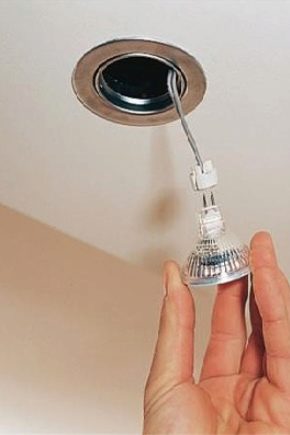
Suspended ceilings with built-in lights have become widely used in modern interiors. All this elegant structure is attached to the natural ceiling of the room with wood or metal frames. A suspended ceiling carries the function of lighting and hides the imperfections of a conventional ceiling.
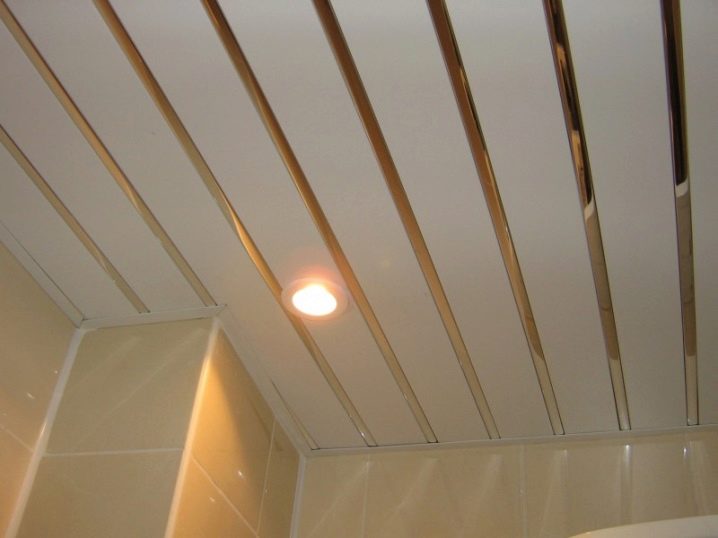
From the rough ceiling to the stretch ceiling, a space of about ten centimeters remains, in which electrical wiring and lighting fixtures are placed. The second ceiling has clever openings for the installation of light sources. From the side of the room, the lighting set is presented in the form of a decorated ring.
A socket with a lamp and springs for fastening are attached to the body from the inside, their task is to hold the lamp. It is not so difficult to insert a halogen light bulb into a suspended ceiling, the main thing is to connect it correctly.
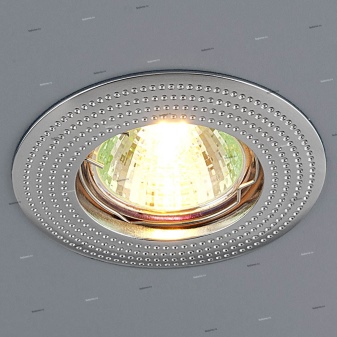
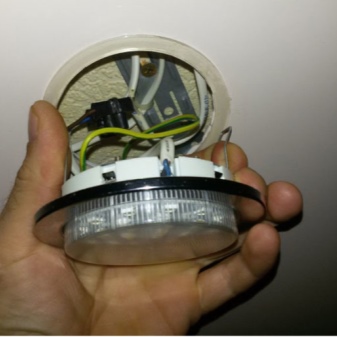
Varieties
To solve the problem of removing a damaged light bulb, you do not need to call a specialist. The process of replacing a light bulb is not that difficult. First, you should familiarize yourself with the basic principles of lamp operation in a suspended ceiling.
Lamps have different wattage, emit different amounts of heat, differ in energy consumption, price, service life.
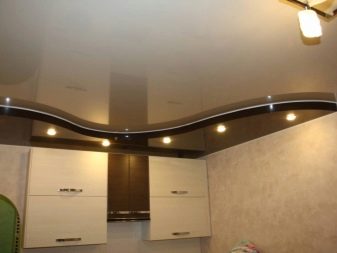

Luminaires are installed on the suspended ceiling, in which several types of lamps are used:
- The familiar incandescent lamps. Currently, they are not particularly popular due to their uneconomic properties, although they have the advantage of being able to work at any temperature and humidity.


- Halogenproviding very bright lighting. Their advantage is durability, efficiency, compactness.

- LED. They are considered the most economical, as a result of which they have become the most popular.

The order of unscrewing each type of lamp is different, therefore, before removing them, it is important to find out what type of light source is.
Since the bulbs will have to be replaced more than once, it will not be superfluous to get acquainted with the constituent elements and remember their names. All lamps have a protective cover, main body and special clips.

But in their design there are other parts, knowing about which, it is easier to dismantle any kind of light bulb:
- a case that is invisible from the outside, because it is located in the space under the ceiling, a wire and a cartridge are hidden in it;
- tendrils of a spring type, serve to hold the lamps and fix them on the surface of the ceiling;
- a protective cover made of plastic or glass, also serves as a light diffuser and protects the entire set from dust;
- spring ring for fixing the protection cover.

In order to remove a light bulb, it is not necessary to remove the entire lamp. Usually only the cover and the ring have to be removed. Bulbs have different mounting methods, so when choosing a new lamp, be sure to consider the type of its base.
Base / plinth types
There are lamps with a threaded base, like incandescent lamps. In this case, the usual twisting is sufficient.
Other types are very popular:
- lamps with a pair of pins, they emit a click when they are fixed;
- rotating fixing lamps;
- there is a type of "tablet" lamp, it is more often used in suspended ceilings.



Withdrawal options
The first step when unscrewing a light bulb is to turn off the power, that is, to de-energize the housing from the electrical panel. Remember: you need to not only turn off a specific light bulb, but also turn off all lighting.Not everyone of us knows that it is necessary to turn off the phase, and the switch goes to zero. Don't put yourself at risk.
Next, you need to remove the lamp stopper ring, it serves as a retainer. To remove it, it is enough to press the antennae, the lamp easily comes out of its body and hangs on the contact holder. Now you just need to pull it towards you or turn it to the left (depending on what type of lamp) and pull it out.
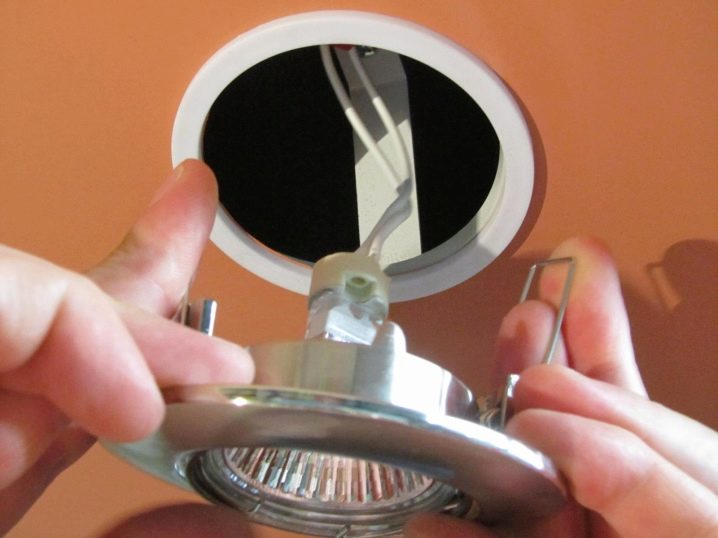
Lamps can be without retaining rings. In this case, you have to remove the entire lamp from the socket.
The easiest way to unscrew the so-called "pills": with one hand, slightly turn the lamp back, wait for a click, pull it down and pull it out. The rest of the light remains in place.

Bulbs with E14 and E27 cartridges are even easier to maintain: they are replaced according to the familiar scheme with an ordinary standard cartridge. We unscrew, as always, the old bulbs, and we also spin the new bulb back. Here it is only important to choose the size for 14 and 17.


When replacing any bulbs, pay attention to the type and size of the base. When unscrewing halogen lamps, they should not be touched with hands without gloves, they easily leave marks that give a dim light in the room. In addition, bulbs that have been touched with greasy fingers will burn out quickly.
This is especially true for models with a G4 or G9 base. They have a special design - the luminaire body has no additional fasteners, so to remove the light bulb, you just need to pull it down.
When handling halogen products, remember to wear gloves or hold the lamps with tissues. If they are not at hand, wrap the bottom with regular paper tape. No contamination of halogen lamps should be allowed.
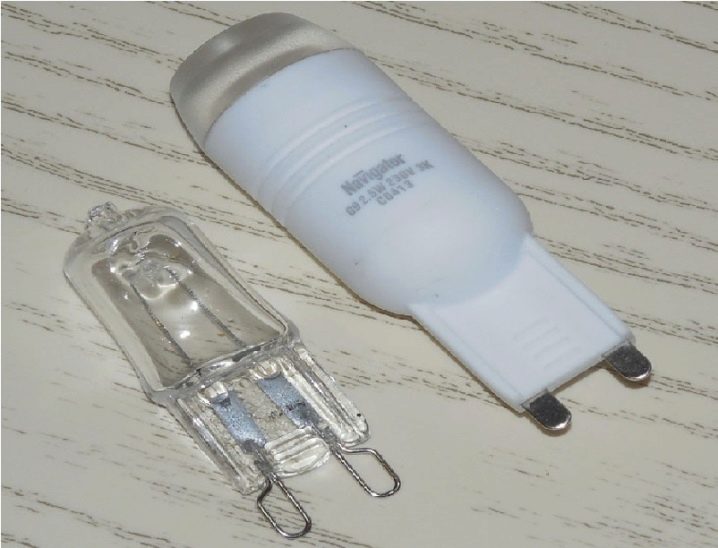
For easy removal of the light bulb, you can completely dismantle the lamp housing from the false ceiling by gently prying the decorative circle with a screwdriver. Then the inner part opens and you can easily bend the pressure pins and pull the case out of the suspended structure. You can also remove the cover to replace it.
To work with LED lamps, you need to know that in many of them lamps and fixtures are one whole. This means that it is necessary to remove the lamp completely. It is not located in the ceiling foil, but has a mounting platform. If you carefully bend the luminaire, you can see two expansion springs - these are the fastening elements. When removing the luminaire, hold them with your hands, otherwise the ceiling can be easily damaged. The springs must be bent inward, pulled towards you and pulled out the lamp. As you can see, there is nothing complicated. The main thing is to follow simple rules. Although LED bulbs are the most durable, sometimes they also need to be replaced.

Having unscrewed the bulbs in the false ceilings at least once, this can be easily dealt with in subsequent cases. But if the lamp or the lamp itself is damaged, work is complicated by the risk of cuts, pricks in small pieces. The advice of professionals and proven folk techniques will come to the rescue.
Pliers with pointed ends come in handy for this job. They need to grab the metal part of the lamp and slowly turn it in the opposite direction until the lamp is removed.
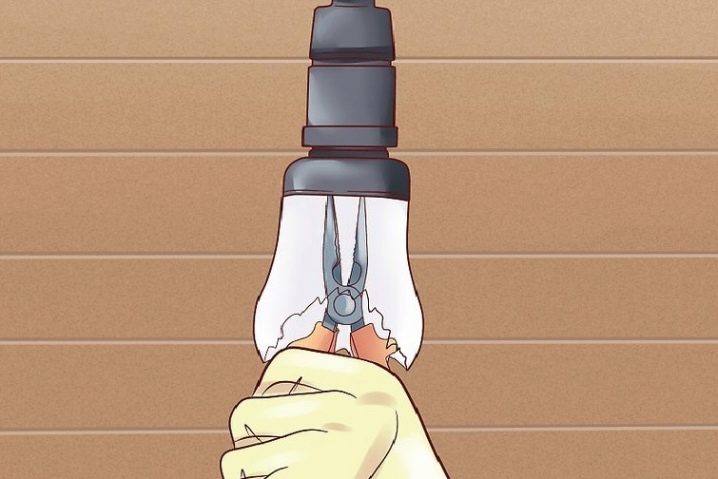
You can roll a ball out of electrical tape with the adhesive side outward, attach it to the center, press lightly so that the light sticks to the ball. After that, it will unscrew freely.
And the weak half of humanity - women, solves the problem of a raw potato: you need to cut it into two halves, press one of them on the unusable light bulb and calmly twist it.

The lamp can not only burst, but also get stuck. It kind of sticks to the cartridge, and you just can't unscrew it. In such cases, everything depends on the structure of the luminaire. If the model allows, both the cartridge and the bulb are unscrewed. Then it is not difficult to remove it.
And if the design of the luminaire does not allow such a technique, the light bulb can only be broken. But before that, you should wrap it with a cloth to protect it from fragments.The remaining base must be disconnected with pliers and pulled out.
If an LED lamp bursts or gets stuck, it is easier to replace it, since it changes with the whole body.
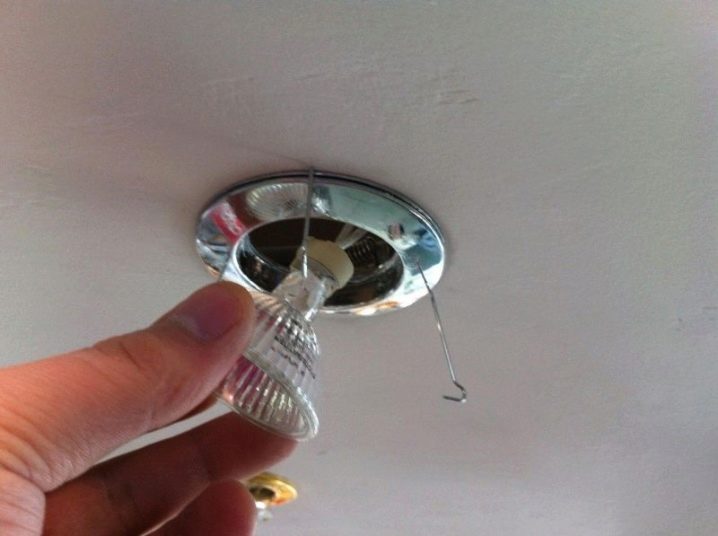
If a chandelier is hung on the suspended ceiling, the entire device must be removed to replace the light bulb in it.
To do this, proceed as follows:
- first remove the cap that covers the hook on which the chandelier hangs;
- put your hand in the gap under it;
- take the chandelier at the point of its attachment and carefully remove it while pulling out the electrical wire;
- disconnect the wire by removing the insulation.


The chandelier is removed from the ceiling. If it is heavy, you should call someone for help before going down the ladder. Now it is easy to unscrew and replace a burnt out light bulb.

In the next video, you can visually see the options for unscrewing the bulbs from the socket.
Possible problems
When replacing lamps, you may encounter the following problems:
- The antennae beat on the fingers. If they are too strong, removing the lamp could damage the ceiling. The solution to this problem is to hold the springs firmly enough to prevent finger and ceiling damage. The light source must not be allowed to hang on the film; it is necessary to ensure that the springs get into the fastening ring behind the film.
- At one time, workers who installed the ceiling could leave bare parts of the wire behind it. To eliminate this problem, even after the house (apartment) is completely de-energized, it is better to wait a few minutes before starting work. Otherwise, there is a risk of electric shock.

- Do not unscrew incandescent and halogen lamps immediately after burnout, they are hot at this moment and can burn your hands. From surprise, you can drop the lamp and break it in the room.
- If a fluorescent lamp breaks, it is necessary to clean the room from mercury. We'll have to urgently remove traces of metal from the walls and floor.

Frequent burnout of bulbs used in a suspended ceiling is due to several factors: long operation of the backlight, installation irregularities: insufficient fixation, improper connection to the wiring, disregard for instructions, touching bulbs with hands without gloves, etc. Fortunately, modern technologies, used in the assembly and connection of luminaires, allow you to remove lamps and replace them with new ones without much effort.
Whichever way the lamps are twisted, the house must be completely disconnected from electricity.
For any kind of dismantling, the basic rules are leisurely, neatness, minimal contact with the structure in order not to damage it, not to leave dirty traces, not to make dents, cuts.

The more responsible the approach to removing the spoiled element, the better this work will be performed. And this, in turn, prolongs the service life of lamps in suspended ceilings and the paintings themselves.
Any lamps can be safely removed from the false ceiling. Be careful when working with ceiling systems. Excessive haste and overestimation of their capabilities can lead to damage to the coating with any careless movement.













The comment was sent successfully.